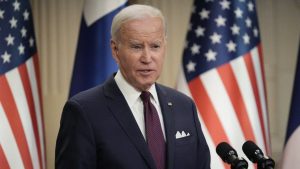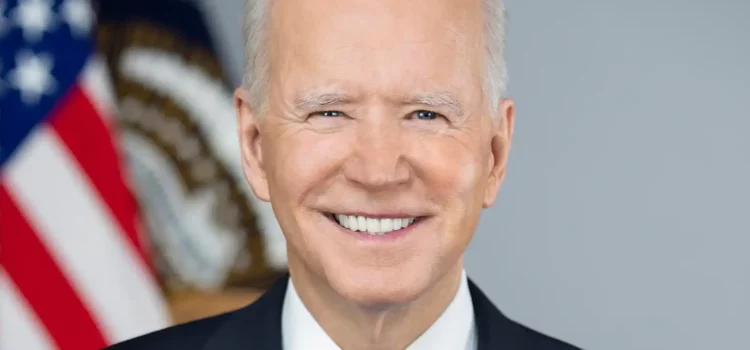
Introduction: Championing Internet Fairness
In the ever-evolving landscape of digital communication, the concept of net neutrality has taken center stage once again. Jessica Rosenworcel, the chairwoman of the Federal Communications Commission (FCC), has announced the Biden administration’s intent to resurrect the principles of net neutrality that were implemented during the Obama era and later dismantled by the Trump administration. This move, which aims to restore open internet rules, signifies a significant shift in policy and has sparked widespread discussions. But what exactly is net neutrality, and why is it crucial? Let’s delve deeper into this pressing issue and understand how it impacts you, the consumer.
In April 2024, the Federal Communications Commission (FCC) under President Joe Biden took a decisive step to restore net neutrality, reasserting rules that prevent internet service providers (ISPs) from blocking, throttling, or prioritizing online content. This move marked a return to the 2015 Obama-era protections repealed in 2017 under the Trump administration nypost.com. Advocates hailed it as a victory for the open internet, ensuring all users and services receive equal treatment online. But by January 2025, a federal appeals court struck down the FCC’s revival, citing limits on the agency’s authority reuters.com. This article unpacks the rise, fall, and future of Biden’s net neutrality agenda—and why the fight for an open internet is far from over.
The Origins of Net Neutrality
The principle of net neutrality holds that ISPs must treat all internet traffic equally, without favoring or penalizing particular websites or services. Its roots trace back to 2005 when the FCC first introduced voluntary guidelines. In 2015, the Obama-era FCC reclassified broadband as a Title II telecommunications service, granting the agency broad oversight and legally enforcing net neutrality rules perkinscoie.com. These measures prohibited ISPs like AT&T and Comcast from blocking lawful content, throttling streaming services, or creating “fast lanes” for those willing to pay premium fees.
However, in December 2017, FCC Chair Ajit Pai led a repeal that reclassified broadband as an information service, stripping the agency of Title II powers and dismantling net neutrality protections investopedia.com. Supporters of the repeal argued that lighter regulation would spur network investment and innovation. Critics warned that without enforceable rules, ISPs could degrade service quality and stifle online competition.
Biden’s Call for Restoration
On his first day in office, President Biden issued an Executive Order directing federal agencies to promote competition in the digital economy, explicitly calling on the FCC to restore net neutrality protections edweek.org. In July 2021, the National Telecommunications and Information Administration (NTIA) reiterated support for reinstating Title II authority and net neutrality rules that safeguard consumer rights and preserve fair competition statescoop.com.
Under Chairwoman Jessica Rosenworcel, the FCC launched a rulemaking process. After months of public comments—where over three million submissions poured in favor of preserving an open internet—the commission voted on April 25, 2024, to restore net neutrality. The new order extended protections against blocking, throttling, and paid prioritization for both fixed and mobile broadband services. Rosenworcel called it “a milestone in protecting online free speech, innovation, and consumer choice” nypost.com.
The 2025 Legal Setback
In January 2025, the U.S. Court of Appeals for the Sixth Circuit struck down the FCC’s 2024 order. In Ohio Telecom Association v. FCC, the court held that the FCC exceeded its authority by reclassifying broadband under Title II without clear congressional approval perkinscoie.comreuters.com. The decision followed the Supreme Court’s 2024 ruling in Loper Bright v. Raimondo, which curtailed the deference courts give to federal agencies under the Chevron doctrine perkinscoie.com. Without Title II status, the FCC could no longer enforce net neutrality rules, leaving federal protections in limbo.
Industry groups welcomed the ruling. Telecom executives argued it would encourage infrastructure investment by reducing regulatory uncertainty reuters.com. Meanwhile, consumer advocates decried the decision as a blow to internet freedom and vowed to pursue appeals and legislative action reuters.com.
State-Level Safeguards and Patchwork Protections
With federal net neutrality rules invalidated, several states moved to fill the gap. California, Oregon, and Washington had adopted their own net neutrality laws after the 2017 repeal. These state regulations apply Title II-like protections to ISPs operating within their borders reuters.com. California’s law, for example, prohibits blocking, throttling, and paid prioritization and empowers the state attorney general to enforce penalties.
However, a patchwork of state rules creates complexity for ISPs and consumers alike. Providers argue that varying state requirements hinder the rollout of uniform service nationwide. Consumers in states without net neutrality remain unprotected, while those in covered states enjoy stronger safeguards. This uneven landscape underscores the need for a federal solution to ensure consistent, nationwide open internet policies.
Net Neutrality Unveiled
Net neutrality, often referred to as the “open internet,” is a set of rules that once prohibited broadband internet providers from engaging in activities such as blocking or slowing down online services. It also prevented these providers, including telecommunications and cable companies, from charging higher prices to content providers for faster internet access, commonly known as “fast lanes.” The fundamental idea behind net neutrality was to maintain a level playing field on the internet, ensuring that all online content was treated equally, regardless of its source.
The Shift in Political Landscape
The repeal of net neutrality in 2017 by the FCC marked a significant change in the direction of internet regulation. This move placed the FCC “on the wrong side of history, the wrong side of the law, and the wrong side of the public,” as stated by Chairwoman Jessica Rosenworcel. However, the political winds have shifted once again with the recent confirmation of Anna Gomez as the fifth commissioner of the FCC, giving Democrats a majority on the commission. This development has paved the way for the restoration of net neutrality rules.
Looking Ahead: The Future of Net Neutrality
As the FCC chairwoman prepares to release the full text of the proposed rule, the fate of net neutrality now rests in the hands of the commission. The draft proposal is scheduled for a vote on October 19, with a period of public comment and replies expected to follow. The final decision on these rules is likely to be made in the coming year.

Visual Table: Key Points
| Key Point | Description |
|---|---|
| Net Neutrality Defined | Ensures internet providers treat all online content equally. |
| Political Landscape Shift | Democrats gain a majority on the FCC, setting the stage for net neutrality’s potential revival. |
| The Road Ahead | The FCC’s proposed rule will be voted on in October, with the final decision expected next year. |
| Public Interest and Impact | Net neutrality has sparked public interest and debates about corporate power and internet fairness. |
Conclusion: A Fair and Open Internet
The debate surrounding net neutrality transcends mere technicalities. It is a matter that resonates politically, particularly with those who view it as a necessary check on corporate power. The open internet, they argue, is vital to preserving fairness and accessibility in the digital age. On the other side of the spectrum, opponents have expressed concerns about regulatory overreach and government intervention.
In practice, the doomsday scenarios painted by both sides have not materialized. During the Obama administration, broadband pricing remained untouched. Similarly, after the repeal of net neutrality rules, broadband providers have, by and large, refrained from practices like blocking, throttling, or creating paid prioritization schemes.








